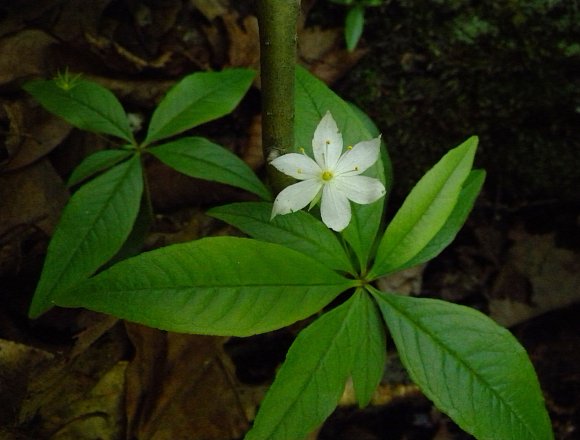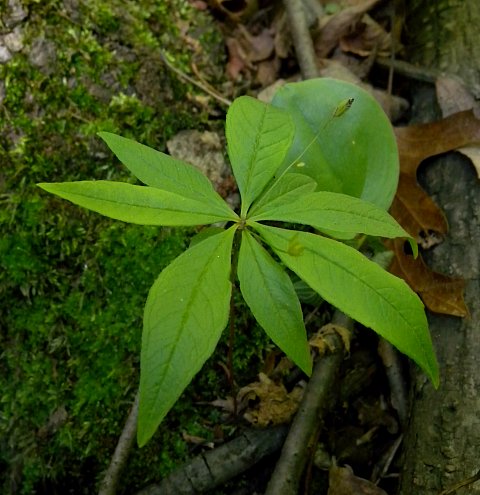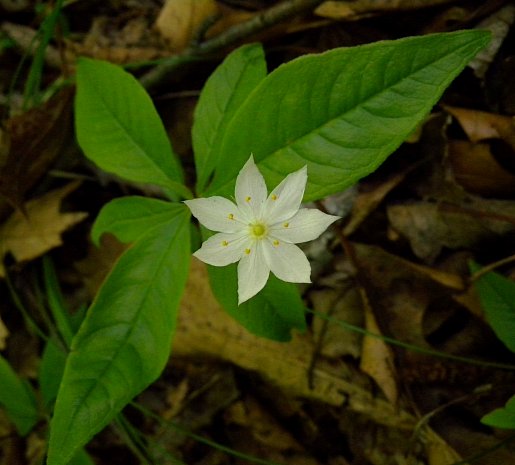
From the center of the whorled leaves, there develops 1-3 flowers on erect or ascending pedicels. The pedicels are ¾-2½" long, terete, light green (sometimes tinted yellow or red), glabrous, and slender. Each flower is about ½-¾" across, typically consisting of 7 white spreading petals, 7 light green sepals, 7 stamens with pale yellow anthers, and a light green ovary with a single white style. However, a flower can have as few as 5 petals, sepals, and stamens, or as many as 9. The petals are lanceolate-elliptic in shape, while the sepals are linear-lanceolate and glabrous. The petals are longer than the sepals. The blooming period is mid-spring to early summer (in Illinois & neighboring areas), lasting about 2-4 weeks. Afterwards, the flowers are replaced by ovoid seed capsules that are 5-celled; they are shorter than the sepals. These capsules eventually split open to release their seeds. The root system is rhizomatous and fibrous; the rhizomes are slender and long.
Cultivation: The preference is light shade or dappled sunlight, moist conditions, an acidic soil containing peat and/or sand, and cool summer temperatures.

Range & Habitat: The native Starflower is rare in Illinois and state-listed as 'threatened.' It is restricted to the northern section of the state (see Distribution Map). Illinois lies along the southern range-limit of this species. Habitats include tamarack bogs, birch bogs, hummocks in sandy swamps, edges of sandy woodlands along swamps, and ravines leading out of bluffs. This wildflower is found in high-quality natural areas where either coniferous or deciduous trees are present.
Faunal Associations: Records of floral-faunal relationships for Starflower (Trientalis borealis) are sparse. The flowers attract Halictid bees, Andrenid bees (Andrena spp.), and Syrphid flies. All of these insects either collect or feed on pollen, as the flowers do not produce nectar. The Eastern Chipmunk sometimes eats the seeds/capsules of this wildflower. It is possible that other small rodents do this as well.

Photographic Location: A moist woodland along the edge of a sandy swamp in NW Indiana.
Comments: This delicate wildflower is unusual because it typically has 7-petaled flowers. The flowers of Starflower superficially resemble those of one of the showier chickweeds (e.g., Stellaria pubera), except their petals are usually more numerous and they are located above a conspicuous whorl of leaves. Two other species in the Trientalis genus have been described, but they don't occur in Illinois. One species from the Pacific northwest of North America, Trientalis latifolia, has pinkish flowers rather than white, while a European species, Trientalis europaea, has pedicels that are usually longer than the leaves. A more specific common name of Trientalis borealis is Northern Starflower.